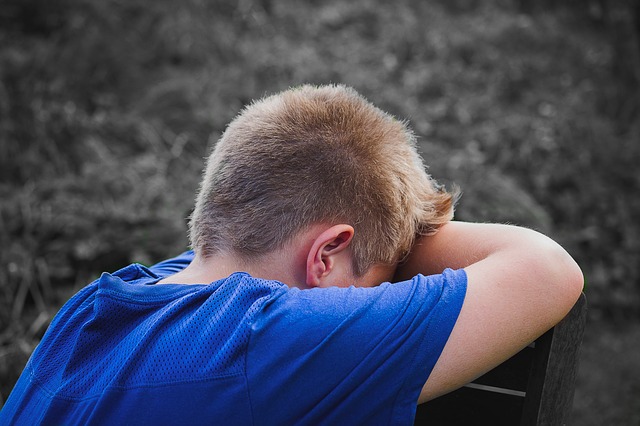Cool Down Spaces: Best Practices for Managing Challenging Behaviors in the Classroom or the Home
Parents and teachers can feel confused and uncomfortable when students shout, cry, or act in ways that appear developmentally or culturally inappropriate. It’s helpful to learn who you can turn to for training or advice on behavior management and it’s equally useful to learn a few strategies to help children regulate their emotions and, in turn, their behaviors.
What are “Behavioral Outbursts?”
Most experts describe behavioral outbursts as extreme, lengthy episodes that defy social and cultural expectations and are developmentally inappropriate. Children may exhibit difficulties with their behavioral conduct for a variety of reasons. For a child, difficulty regulating their own behavior can stem from a developmental diagnosis, attachment issues, genetics, trauma, physical discomfort, a lack of sleep, hunger, over-stimulation, a desire to escape a certain task, and so on. Because the causes can be so varied, challenging behaviors can be difficult to respond to in the classroom or at home. It is important to keep this in mind because it reminds us that children are complex little beings who are each shaped by a variety of internal and external factors. Furthermore, reductionist theories of behavior (such as that a student is “acting out” or “looking for attention”) may cause us to miss an opportunity to support a student’s growth, or attend to their specific set of circumstances.
When students, including those with autism, exhibit disruptive behaviors in the classroom they are sometimes removed from the room. Their removal leads to a decrease in instructional hours, which in turn is associated with poor academic performance. This can mean failing grades, retention (being held back a grade), or even dropping out of school and having difficulty finding employment.
For each of these instructional, social, and ethical reasons, the question of how to educate students with behavioral difficulties persists as one of the predominant challenges in special education. This challenge directly affects many students with autism, who may struggle with classroom dynamics, with conforming to the expectations of teachers, and with other aspects of student life.
 One of the best supported classroom practices involves the creation of Cool Down Spaces. These spaces are designed to teach children to regulate their own emotions, and prevent the stress and administrative challenge of frequent outbursts in the classroom. Unfortunately, well-meaning educators sometimes incorrectly implement cool down spaces in ways that can prove counterproductive and frustrating to students. This article introduces a few good and bad practices to help you advocate for your child and implement similar techniques in your home or in the classroom.
One of the best supported classroom practices involves the creation of Cool Down Spaces. These spaces are designed to teach children to regulate their own emotions, and prevent the stress and administrative challenge of frequent outbursts in the classroom. Unfortunately, well-meaning educators sometimes incorrectly implement cool down spaces in ways that can prove counterproductive and frustrating to students. This article introduces a few good and bad practices to help you advocate for your child and implement similar techniques in your home or in the classroom.
Preventive Strategies: Cool Down Spaces & Positive Behavior Intervention and Supports
Most experts agree that behavior management should focus on promoting appropriate conduct and autonomous self-regulation. These self-regulatory skills have repeatedly been associated with school readiness and success - even more so than IQ. Therefore, strategies that promote a mastery of one’s own emotions and behaviors are preferable to strategies that are solely consequence-based. Two particularly common and empirically-supported classroom practices are Cool Down Spaces and Positive Behavior Interventions and Supports (PBIS).
A Cool Down Space is intended to serve all students in the classroom. It takes different forms depending on the classroom, school, and teacher but is usually a comfortable, somewhat private seating area in a corner of the classroom. Some teachers use trauma-informed design and make the cool down space a quiet, low-light, undecorated location. Others support their students by providing posters with supportive messages, images, or techniques. Examples include stop lights (red, yellow, and green indicate different levels of emotional arousal), thermometers (similar concept), or a countdown beginning at ten to prompt deep breathing exercises.
 Different materials may also be made available within a Cool Down Space. Examples may include noise cancelling headphones, molding clay, chewing gum, therapeutic toys, visual timers, lavender scented pillows, eye masks, a small trampoline or comfy seating areas. The materials should be carefully selected at the beginning of each year to suit the needs of specific students in the classroom, and be developmentally appropriate for the grade level. The types of supports that specific students may utilize can be discussed in team or IEP meetings and may be replaced or phased out over time. As students age, the materials should become increasingly adaptive and strategies should be developed to handle self-regulation without retreating to a corner of the room. Care should also be taken to ensure that students are using the Cool Down Space for emotion regulation, rather than to escape from academic work or to avoid conflict resolution.
Different materials may also be made available within a Cool Down Space. Examples may include noise cancelling headphones, molding clay, chewing gum, therapeutic toys, visual timers, lavender scented pillows, eye masks, a small trampoline or comfy seating areas. The materials should be carefully selected at the beginning of each year to suit the needs of specific students in the classroom, and be developmentally appropriate for the grade level. The types of supports that specific students may utilize can be discussed in team or IEP meetings and may be replaced or phased out over time. As students age, the materials should become increasingly adaptive and strategies should be developed to handle self-regulation without retreating to a corner of the room. Care should also be taken to ensure that students are using the Cool Down Space for emotion regulation, rather than to escape from academic work or to avoid conflict resolution.
Proper use of the Cool Down Space can be established at the beginning of the school year. Expectations should be carefully explained and modeled for students, such as “we walk to the cool down space with a calm body and a quiet mouth so our friends can keep working.” The teacher can demonstrate how to use the Cool Down Space and could encourage the students to demonstrate a “cool down walk” during circle time. The types of practices that students can use in the cool down space should be reviewed as a classroom throughout the year. These might include:
- breathing exercises
- internal scripts
- visualizations
- the use of sensory materials
Classroom staff should also review the purpose and protocols for cool down spaces. All adults in the classroom should know that cool down spaces are volitional - meaning students should choose to go on their own rather than being sent. Additionally, staff should know how to intervene if a student is not using the space properly, and learn to recognize when a child may benefit from a more targeted behavioral intervention plan.
School-wide forms of behavior management and social-emotional development are also gaining popularity among educators. Positive Behavior Intervention and Supports (PBIS) is a framework that promotes universal screening for behavior, tiered levels of support for students who are struggling, and the use of positive praise and reward to encourage desirable behavior. Examples of PBIS include token systems where students are awarded stickers or fake dollars that they can trade in for prizes or praise. For a list of possible prizes and rewards see Stages Learning PBIS Rewards List.
Response to Outbursts: Intentional, Consistent, and Individualized
Behavior analysts and school counselors are the best resource for school discipline and behavioral interventions. It is important to have general guidelines for responding to behavioral outbursts, knowing that specific students will respond best to targeted approaches. In some cases it may be effective to ignore the behavior, while in other cases students may benefit most from another option, such as taking a walk. The responses to specific students should be intentional and consistent across classroom staff. Students who continually struggle to regulate their behavior in the classroom should be on a personalized behavior plan, and all staff who work with these students should be familiar with the details of the plan.
Behavior Management: What To Avoid
Behavior management in the classroom is a taxing and complex task for educators, especially when specific students struggle with regulating their actions and emotions. The best advice is to seek consultation from veteran educators, parents, behavior specialists, school counselors/psychologists, or teacher educators. Of course, educators are often faced with in-the-moment challenges and there is not always time for immediate consultation. Therefore, here is a quick list of what to avoid:
- Shaming students
- Defining students by their behavior or reducing them to labels (ex. “The difficult kid” or “the EBD boy”)
- Using cool down spaces as punishments or places to contain noncompliant students
- Keeping a student in the classroom if they are becoming physically or verbally aggressive
- Restraining a child (without proper authorization or training) or placing them in physical harm
- Threatening a student

Briana Brukilacchio
Briana Brukilacchio has worked with autistic individuals and their families in many settings. From schools and summer camps to research labs and psychiatric clinics, she has made it her mission to meet and learn from as many people on the spectrum as possible. She holds a Masters of Education in Human Development and Psychology from the Harvard Graduate School of Education and is pursuing a PhD in Educational Psychology, specializing in Clinical Neuropsychology, at the University of Texas at Austin.




